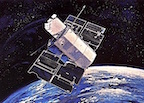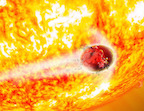Here are some of the presentations I have developed and given. The dates
or range of dates indicate in what years I gave the talk. I have given two
of them over the Internet via Webex. I have also supported local teachers
with astronomy lessons in the classroom.
Click on the presentation name to see a brief summary below. Most of the presentations
can be tailored for audiences ranging from families with young children to
amateur astronomers. They can even be given remotely via Zoom.
Earlier presentations given with 35-mm slides are no longer available.
A brief
biography is given at the end of this page.
|
The Cool Universe: Explorations by the James Webb Space Telescope (2024)
How does the James Webb Space Telescope differ from the Hubble Space Telescope?
Why does it orbit a million miles from the Earth? How does JWST work?
What are some of the discoveries it has made since being launched on Christmas Day in 2021?
What is the JWST doing now?
The presentation was given at the Beachwood Township Hall, Iron County, Michigan,
in July 2024.
|
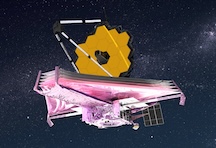
Artwork from NASA
|
|
Luna, Earth’s Moon (2019)
Lunar phases, super moons, and lunar features start the presentation.
The middle gives scenes from the first and last Apollo landings on the
Moon. The ending gives some of the findings from the samples
brought back from the Moon that are pertinent to the Moon’s origin,
and a brief summary of the Giant Impact hypothesis of the origin of
the Moon.
This presentation was created to help celebrate the 50th anniversary
of the landing of Apollo 11 on the Moon in 1969.
It was given to campers at Maine’s Lake St George State Park
and to summer students at Thorndike Elementary School in 2019.
|
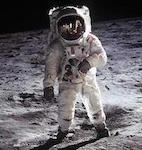
Apollo 11 photo from NASA
|
Orbiting Astronomical Observatory-2 was the first satellite to deliver astronomical data
about stars, planets, nebulae, and galaxies to astronomers on Earth.
It functioned from 1968 until 1973, and was an essential step in the progress
to the Hubble Space Telescope.
This is the story of that mission, its operations, and its discoveries.
I helped to operate OAO-2 and prepared this talk in honor of the 50th anniversary
of its launch into orbit.
The presentation was given at the Howard Astronomical League on March 21, 2019,
and at the Space Telescope Science Institute on May 21, 2019.
Click here to see a video of the
version at the STScI.
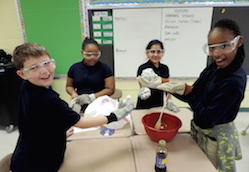
Fifth grade students in Baltimore with the model comets they made in class
|
Supporting Teachers Under Project ASTRO
I have supported fifth grade teachers in presenting astronomy
to their students through
Towson University's Project
ASTRO program, which is affiliated with the national
Project ASTRO from the
Astronomical Society of the Pacific.
My contribution has consisted of presentations and hands-on activities,
such as exploring the spectra of lights in the classroom,
building a star finder, and building model comets using dry ice
and other common materials.
I participated in the 2014/2015, 2015/2016 and 2016/2017 school years.
The presentations I used for the fifth graders are:
- Constellations
- Comets
- Astronomers (and their diversity)
- Our Moon
- Spectra
- The Birth of Planets
|
Fire or ice? With a bang or with a whimper? How will the third planet
from the Sun end its days? No one knows for sure, but scientists have
ideas on which possible endings are likely and which are improbable.
I discuss some of these possibilities. I present human-made hazards, such as
global warming and nuclear war, as dangerous to humanity,
but not to the Earth itself. Natural hazards range from the extremely
unlikely collision with another world to the almost certain searing
or engulfment by the dying sun in 5 billion years.
The idea for this topic came from a lecture by Neil deGrasse Tyson.
The presentation was given at Coffman House in Falcon Heights, MN,
and at Iron County Historical Museum in Caspian, MI, both in 2015.
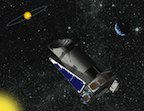
Image from kepler.nasa.gov
|
Got Planets?
Got Planets? tells the story of the more than 1,800 exoplanets -
planets orbiting other stars -
that have been discovered in the past two decades and the more
than 4,000 candidates are waiting for confirmation.
This presentation begins by describing some of the discoveries.
The middle tells about three techniques that have produced evidence for exoplanets.
The end discusses the search for planets on which life may exist
and the challenges to be faced in finding life in the universe.
I first developed this presentation for families waiting to look
through the telescopes at Idaho's Bruneau Dunes State Park during the
summer of 2013. An updated version was used
at the Iron County Historical Museum in Caspian, MI, in 2014.
|
|
Invisible Universe (2012)
Living on the Earth, nearly everything we know about the universe we have learned
by seeing light from the celestial objects, whether that light is visible light,
radio waves or X-Rays. Yet astronomers now think that the the universe filled with
invisible stuff, stuff like black holes, dark matter and dark energy.
In fact, they think that that the bulk of the universe is invisible.
If we can't see these things, how can we ever
know that they are there?
And if the universe is filled with invisible things,
what can we deduce about the nature of these things? This presentation
describes some of the observations and measurements that that force astronomers
to accept the invisible side of the universe.
Originally prepared for use during the summer of 2012 at
Iron County Historical Museum in Caspian, MI,
it was also given to families waiting to look
through the telescopes at Idaho's Bruneau Dunes State Park during the
summer of 2013.
|
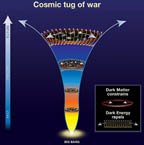
Artwork from Space Telescope Science Institute
|
Variable Stars: Stepping Stones to Understanding
the Universe (2011)

The poet wrote, "Bright star, would that I were as stedfast as though art".
On close inspection, however, stars are not steadfast. They become brighter
and fainter with time, they are variable.
To their first discoverers, variable stars were "Wondrous" and
"Mischief-makers", unnatural intrusions upon the starry sky.
Today, we know that nearly all stars are variable to some
degree, yet they still elicit wonder in us. Some types of
variable stars allow us to determine the size of our Galaxy
and/or the age of the universe. Others are the sources of
essential components for the making of our planet. They can
even touch our lives - the study of variable stars allows
ordinary citizens to enjoy the challenge and excitement of
making significant contributions to science.
This presentation introduces some of the people who have discovered
and studied variable stars, explains what makes some stars vary,
and shows how the study of variable stars has changed our concept
of the universe.
You
can watch the version presented at the Space Telescope Science
Institute on April 5, 2011, here.
A version of this presentation was given to families waiting to look
through the telescopes at Idaho's Bruneau Dunes State Park during the
summer of 2013, and a different version via WebEx to members of the
RASC at Saskatoon.
|
Hubble @ 20 (2010)
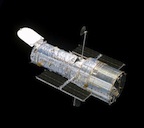
|
In 1990 the Space Shuttle Discovery carried the Hubble Space Telescope
into orbit. Since then the Hubble has generated remarkable images and astounding
scientific discoveries. It has also experienced crises, both natural and
man-made. This presentation gives an historical overview of the Hubble.
It includes some of Hubble's "greatest hits" and their meanings. It
also touches on mission's biggest crises, how the telescope works and who uses it,
and how anyone can get Hubble data and even participate in research based on
Hubble images.
In 2010, I gave this talk
at: the Centro Cultural Salvadoreño Americano in El Salvador;
Mott Community College and Longway Planetarium in Fint, MI;
the Iron County Historical Museum in Caspian, MI;
Coffman Condomium in Falcon Heights, MN;
Brookwood Middle School in Genoa City, WI;
and St. John United Church in Columbia, MD.
In 2011, I gave it to members of the Marquette Astronomical Society
at Northern Michigan University.
A version of this presentation was given to families waiting to look
through the telescopes at Idaho's Bruneau Dunes State Park during the
summer of 2013.
|
|
Sky Gazing (2010)
This presentation begins with constellations and how they
can help you find your way in the sky. It continues with brief discussions
of some of the great puzzles facing astronomy today, puzzles that today's
young people may solve. It ends by describing
the roles of some professional and amateur astronomers.
I first prepared this program to encourage scouts to undertake badge projects
in astronomy and space exploration, and then adapted it for a general audience.
|

|
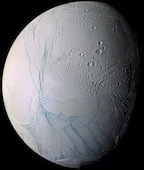
|
Wondrous Worlds (2008, 2017)
In recent decades astronomers have learned many surprising things about the
nature of planets, moons and asteroids and about the forces that affect them.
Much of what we have learned leads to further questions. Big questions remain
unanswered. Is there life outside the Earth? Is there intelligent life elsewhere
in the universe? Can we live on other planets?
This presentation uses images from space
missions and from telescopes on the Earth to report about some of the exciting
findings in our solar system, especially on Mars and Titan, and about the
search for planets of other suns.
In 2017, I prepared a new version of this, titled
Strange and Wondrous Worlds. The new version dealt with
evidence for water on Enceladus and Europa, high resolution observations of
Pluto and Ceres, and concepts about how the Solar System was formed.
|
Behind the Scenes at HST (2006-2019)
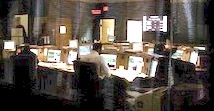
What do observations from the Hubble Space Telescope look like before
they become press releases? How does the Hubble work? Who flies it?
What are some of its surprising discoveries? What are the plans
for telescopes after Hubble? These topics and more are
discussed in this presentation.
Versions of this presentation have been given to families waiting to look
through the telescopes at Idaho's Bruneau Dunes State Park during the
summer of 2013, to members of the RASC at Saskatoon via WebEx in 2014,
and to campers at Maine’s Lake St George State Park in 2019.

|
Three Eyes On The Cosmos: HST, Kepler and JWST (2006)
This presentation was given as the post-banquet talk at the fall meeting of
the American Association of Variable Star Observers in 2006. It discusses
the status of the instruments on the Hubble Space Telescope, and the plans for
repairing and replacing them during Servicing Mission 4 (which occurred during
May 2009). The presentation also tells about the astronomical goals of the
Kepler and James Webb Space Telescope missions.
|
Biography
Originally from the Upper Peninsula of Michigan, I graduated with a
Bachelor of Science degree from the
California Institute of Technology
in 1966, and went on to receive a Ph.D. in astronomy from the
University of Wisconsin-Madison
in 1971. My thesis, carried out under the guidance of Dr. John Mathis, involved building
computer models of planetary nebulae to try to understand why some
appeared to have dense condensations embedded in them.
My first job after getting my Ph.D. was at
Goddard Space Flight Center
where I helped operate the
Orbiting Astronomical Observatory-2,
the first
successful astronomical satellite. The OAO-2 was designed to provide
ultraviolet photometry and low-resolution spectroscopy of stars, planets,
and other celestial objects. During that time I grew to love observing
variable stars. With the OAO-2 we made the first ultraviolet observations
of a supernova as well as many other variable stars. After the OAO-2
suffered a power supply failure in 1973, I returned to Madison to help
reduce its observations.
In 1977 I joined Computer Sciences Corporation to operate the
International
Ultraviolet Explorer from Goddard Space Flight Center. The IUE was a fun
observatory because we were always in real-time communication with the telescope.
We were able to react immediately to new information either from the IUE itself
or from other sources. This made it excellent for studying variable sources.
During this time, I obtained new results on dwarf novae and other cataclysmic
variables, on R Coronae Borealis stars, on eclipsing binaries, and even on
pulsating white dwarf stars.
In 1983 I joined my colleagues at the
Space Telescope Science Institute to
prepare the ground system for operating the
Hubble Space Telescope. At the
Science Institute, I served as manager
for the Observation Support System team and then for operation of the
OSS-PODPS Unified System. Most recently I served as Branch Chief for Data
Processing and Archive Services until I retired in summer 2010.
Because of my interest in variable stars I became active in the
American Association of Variable Star Observers. I was a member of the
Council of the AAVSO from 1990 until 1998, and served as president of the
organization from 1995 to 1997.
I have been giving public talks about astronomy since the early 1990's.
With an emphasis on images, most of the material is suitable for the general public,
although I have done presentations for students in fifth grade and, on the other
end of the scale, for amateur astronomers.
Responsible: Albert Holm
Updated: 18 March 2023


